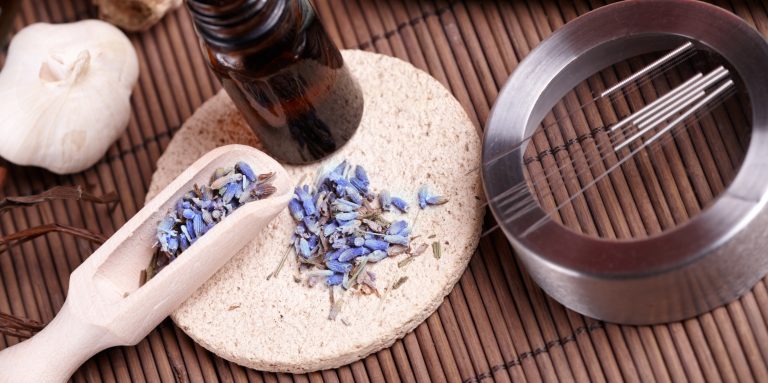TCM: a good alternative
Thanks to its holistic view of the human being, traditional Chinese medicine (TCM) can alleviate or even cure a wide variety of ailments. Thus it contributes significantly to improving quality of life.

Traditional Chinese medicine (TCM) is more than 2,000 years old. Over the centuries, the masters of the art continually refined their ideas and methods and united the various different approaches to form a uniform teaching. TCM gained in popularity during the first half of the 20th century mainly in China. Traditional Chinese medicine was not very widespread at first in modern Europe. It has now grown to become an important component in a wide variety of treatments. Find out about the most important TCM methods here.
Acupuncture
Acupuncture is one of the most well-known and important treatment methods of traditional Chinese medicine. To remove blockages and alleviate symptoms, thin needles are used to stimulate specific points on the body surface.
Phytotherapy
Phytotherapy, also known as herbal medicine, helps to alleviate health problems, prevent diseases, effectively combat stress and enhance the joy of living. Only purely plant-based active ingredients are used, which are matched to each other in an ideal manner depending on the disease or condition.
Qigong
Movement is the best therapy – this is a saying in TCM. Qigong translates to mean “exercises with the life energy”. This method is designed to bring breathing and movement in harmony with each other. The sequence of predefined body movements and postures, in which varied groups of muscles are tensed and relaxed, as well as concentrated breathing, ensure that the energy flow (Qi or Chi) is kept in motion or is revitalised. If you perform the exercises regularly and habitually, you can lower your blood pressure and pulse rate and relax your muscles. If the Chi circulation is continuously kept in balance, the body’s resistance also increases. This guards against diseases such as influenza and other viral illnesses.
Our services to keep you healthy
With COMPLETA supplementary insurance, 75% of the costs for complementary medicine and remedies during outpatient treatment are covered. You will receive 100% of the costs for inpatient treatment, up to a maximum of CHF 5,000 per calendar year.
Tai-Chi
From Qigong came taijiquan, also spelt Tai Chi Chuan, or Tai Chi for short. It is also known as shadow boxing and was originally a martial art developed in the Chinese Empire and dating back to 221 BC. Nowadays Tai Chi has basically lost its martial element. It has become a teaching of movement. Tai Chi serves to promote health, personality development and meditation. However, when Tai Chi is practised as a martial art, it is now known as “Kung Fu”. But only a relatively small number of people actually still practice this martial art as a form of self-defence.
Moxibustion
In moxibustion, specific points of the body are heated in a targeted manner in order to alleviate symptoms. Similar to acupuncture, these are specific therapy points along the meridians of the body – the channels of the Chi life energy. There are four types of application: moxa cones, moxa sticks, moxa needles and moxa patches. In the first three forms, small amounts of dried, fine mugwort fibres (moxa) smoulder above or directly on the therapy points, while the moxa patch is coated on the adhesive side with medicinal herbs which trigger a heat reaction. If moxa needles are used, the therapist directs the heat with special steel needles to focus it on the particular therapy point.
Do you have any questions about TCM?

Articles about this topic
Liability exclusion
The health information provided here is of a general nature and is intended exclusively for information purposes. It is not a substitute for medical advice. In the event of a health problem, you should always consult a doctor or medical specialist.
Do you have questions?
We're here to help.
